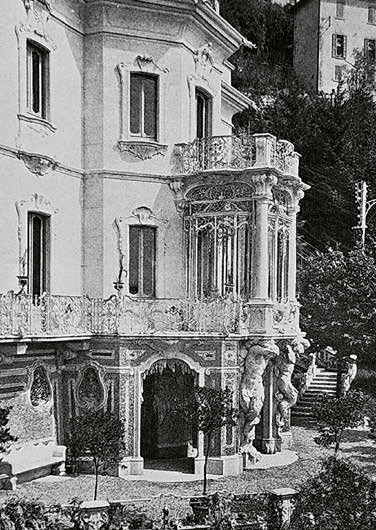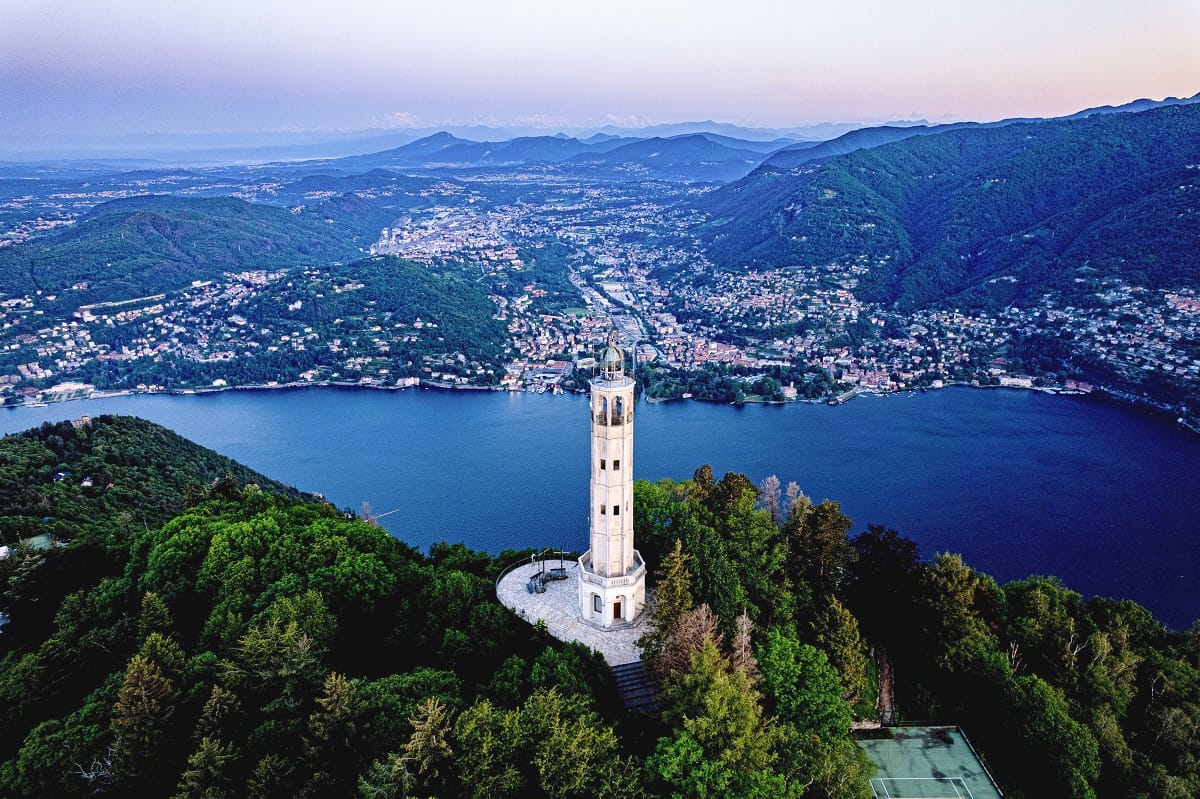The village patronised by the early 20th century bourgeoisie offers panoramic views, attractive footpaths and some of the most beautiful examples of an architectural style which symbolises an era.
Being so close to the town while feeling such a long way away from it is a curious sensation. As anyone who’s been at least once to Brunate, a small village a few minutes away from Como but 700 metres above sea level, will know. You can get there by car, on a windy panoramic road, all uphill obviously. But the most attractive way of getting to Brunate is on the Como funicular built in 1894.
This characteristic mini red train scales the mountain at spectacular gradients offering breathtaking views over the town and the lake as it goes. And you get these same views from the village, too, a panoramic terrace with some of the most spectacular views over the Como branch of the lake. It’s the ideal destination for anyone looking for a place uniting nature and culture, a straightforward day trip for visitors to Como.
It goes without saying that its views are one of the main reasons for a visit to Brunate, as its’ perched over a considerable part of Lake Como and on a clear day you can see as far as the Apennines and the Swiss Alps. And on the subject of memorable views, an approximately 30-minute walk through woods from the village centre takes you to Faro Voltiano, a 29-metre-high tower built in 1927 in honour of Alessandro Volta, with a truly unrivalled view from the top. It is this which lights up with the colours of the Italian flag at night and is visible from Como too.

A WORLD TO EXPLORE ON FOOT
Brunate’s location makes it the ideal starting point for a great many footpaths offering a range of experiences for every season. In winter a walk along Sentiero delle Baite, a nature trail past mountain huts in the direction of Monte Boletto and Monte Palanzone, feels like you’re in a little snowy nativity with views of the lake. In summer, on the other hand, its clear night sky makes it the perfect place for stargazing.
But the village is also known for the crystal clear snapshot it provides of a very specific period of history, the early 20th century, when Italian high society favoured art nouveau as the architectural style of choice for its homes. In fact Brunate is known as ‘art nouveau village’ as it was precisely in the late 19th-early 20th centuries that it became a popular summer residence destination for the Milan and Como bourgeoisie, whose legacy was a series of stylish art nouveau villas.
One of the most famous of these is Villa Pirotta Bonacossa, designed in 1902 and located near the funicular stop whose impressive size led to it being called ‘little Versailles’. Another is Villa Cantaluppi Giuliani, built in a style characteristic of the second phase of Italian art nouveau and currently used as the local headquarters of Associazione Nazionale Alpini, which hosts events of various sorts.
LOCAL PRODUCE
As a village which is separate from Como in administrative terms but has always felt like a sort of high altitude suburb, Brunate has been given a range of nicknames. One of these is ‘onion town’ as a result of its famous onions and spring onions, originally grown in local small farms and a feature of local dishes such as onion soup.
Another much loved local product is Piz, a characteristically copper-coloured bitter liqueur made with honey obtained from an ancient recipe which was only recently rediscovered.





